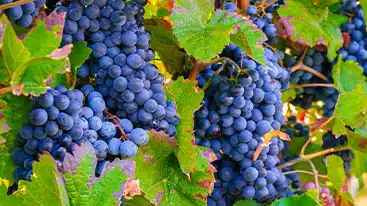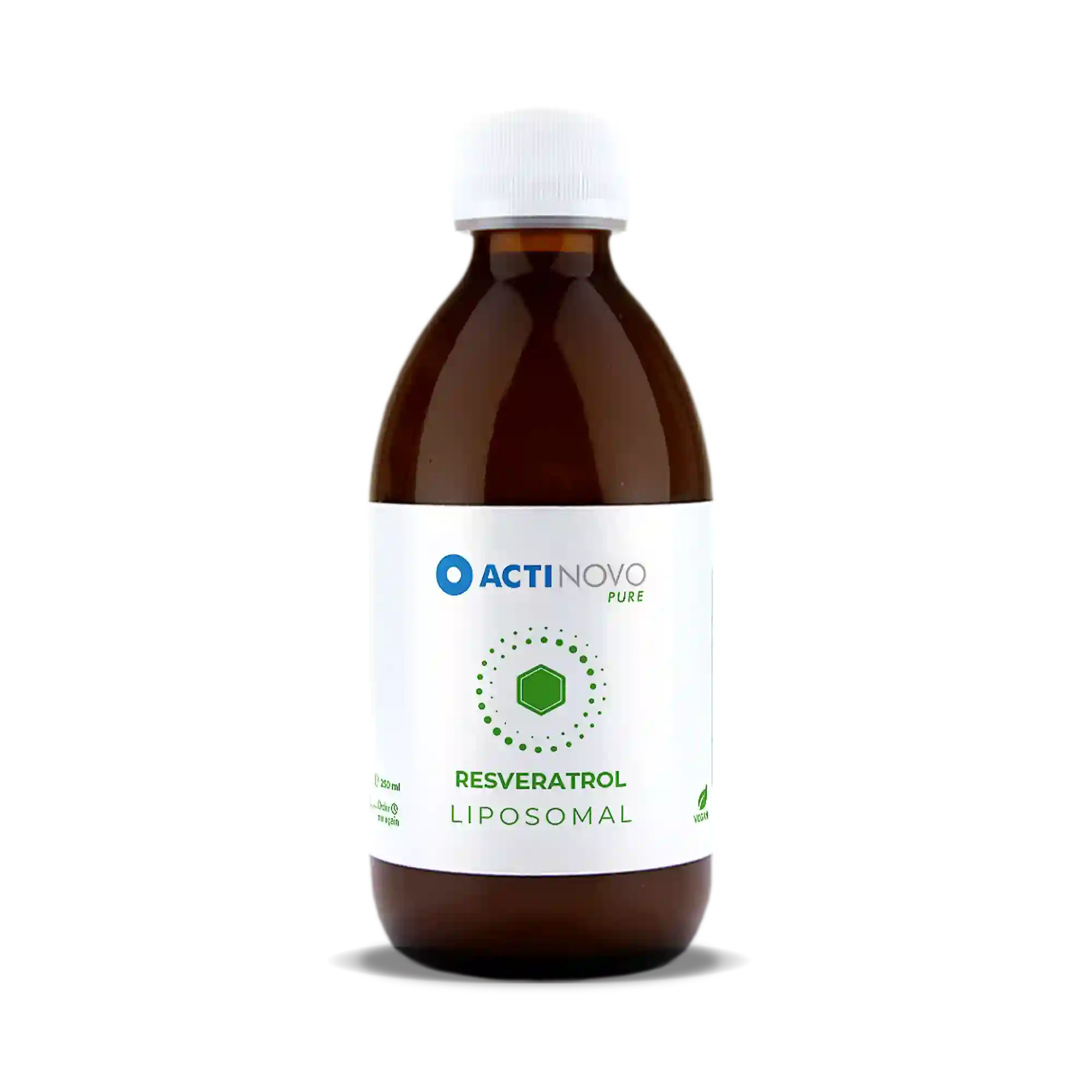
Resveratrol Supplements: Dosage and Benefits
If you’ve heard the old adage that wine is good for health or you are actively researching longevity, you’ve likely heard of resveratrol.
This plant extract exists in more than 70 plant species and is likely to be found in your environment. Certain plants, such as grape skins, grape seeds, giant Japanese knotweed, cassia seeds, passion fruit, white tea, plums, and peanuts, naturally produce resveratrol as a protective response to stress, infection, or UV radiation[1].
The observed behavior of resveratrol has science and nutritionists on the edge of their seats. The body of science has grown largely in the last three decades, especially since the correlation in regards to heart health and cancer cells – as well as red wine – was found. To put it in perspective, the body of literature including clinical studies and controlled trials has been growing on the PubMed database, since the mentioning of resveratrol in red wine in 1992, from a handful to over 13,000 pieces of scholarly work.
As research progressed from plants to mice over to humans, many people have been looking into resveratrol supplementation to benefit from this We have conducted our own research and have collected all the necessary facts and info about the "red-wine molecule" and "anti-aging wonder" for you.
1. What is Resveratrol?
Resveratrol is known as a stilbenoid, a type of polyphenol, which is a group of compounds that act as an antioxidant in the body They are mainly structured by natural parts and can be referred to as a micronutrient, which are essentially microelements needed to survive. When people talk about the health benefits of a plant, they mostly talk about these polyphenols, such as the stilbenoids.
You might have heard about another polyphenol called the Grape Seed Extract OPC
The molecular mechanisms contribute to the beneficiary nature of resveratrol. These mechanisms are multilayered and include epigenetic regulations [4]. Epigenetics play an important role in specifying the purpose of each cell in the human body. The cells of the liver and the brain are essentially the same, however, through epigenetic regulation they serve different functions.
This means that Resveratrol can not only help rid our body of harmful free radicals that could potentially lead to cellular damage but resveratrol supplements are increasingly included as dietary polyphenol in clinical studies to study the potential as "anti-aging" and "anti-obesity" bioactive for therapeutic use [5][6].
2. What is the difference between Resveratrol and Trans-Resveratrol?
Resveratrol exists in two different forms – the cis and trans isomers. This means that they are made up of the same parts, but they are arranged differently. This change in shape drastically changes the function of the molecule.
Trans-resveratrol is considered to be the “more bioactive” form and is what is commonly found in dietary supplements today. The cis form is technically still bioactive and may serve as an antioxidant, however, the majority of research has been conducted with the trans isomer of resveratrol as many of the effects seen with trans-resveratrol do not occur with cis-resveratrol.

3. What are the benefits of Trans-Resveratrol?
Trans-resveratrol has been studied for its use in combatting various conditions. Often its health benefits are thought to be due to its antioxidant and anti-inflammatory role in the body. Resveratrol is thought to possibly lower blood pressure.
Resveratrol can help the body to produce a substance called nitric oxide which is known to relax the blood vessels [10]. Resveratrol has been studied successfully in rats for this purpose [11] and in 2017 a clinical study of resveratrol in patients with hypertension showed its efficacy in reducing blood pressure in these individuals [12].
High levels of fat in the blood can be a dangerous warning sign for cardiovascular diseases to come. A randomized controlled trial studied resveratrol’s effect on LDL (the bad) cholesterol in patients with cardiovascular disease. Researchers found that patients who took resveratrol in addition to their blood fat lowering medication had better cardiac outcomes than those who only took the medication.
The antioxidant and anti-inflammatory effects of resveratrol are thought to play a role in its brain-protecting effects. In the development of Alzheimer’s disease, plaque builds up on the brain. Resveratrol is thought to help prevent this plaque build-up and thus may be a preventive measure for the disease. More research is needed in humans to confirm its effects, but current research is promising.
Furthermore, it has been observed to act as an antioxidant preventing oxidative stress, regulating digestion issues, assisting in weight management difficulties, and fatty liver disease, as well as helping with diabetes [5][6][7]. Research on these topics is preliminary, but these early findings are promising and lead to the continued study of resveratrol for human health.
It is clear that resveratrol is safe to take, as it is recognized as safe by the European Food Safety Authority (EFSA).
4. What foods have Trans-Resveratrol?
Back in the 90s, researchers noticed a strange health trend in France. They saw that despite a diet high in saturated fatty acids, the French had very little incidence of heart disease. They also found that another major factor of their diet was red wine – this led researchers to believe that the wine had a protective effect on their heart health.
This is known as the “French Paradox.”
However, wine, as an alcoholic beverage, is made out of grapes, which include Trans-Resveratrol. Resveratrol has a protective effect on the plants it’s found in. That’s why it can be located in the outer layer of seeds of grapes and peanuts.
The grapes do not have to be fermented and turned into wine in order to have a high resveratrol content. Plain red grapes and grape juice are also sources for the polyphenol. The same goes for other fruits, berries, and nuts including giant Japanese knotweed, cassia seeds, passion fruit, white tea, plums, cranberries, blueberries, and pistachios. It can also be found in cocoa powder and even dark chocolate [1].
Resveratrol has been studied widely for a variety of health benefits and could be responsible for the observed side effects of red wine in the 90s. Nowadays, the consumption of red wine, with all its culinary benefits and side effects, is still accepted within moderate consumption. While one alcoholic beverage a day is likely not harmful to health, it is not clear that it will actually increase your health.
The content in wine is about 2.5mg per glass, while most studies use resveratrol in upwards of 500mg-1000mg at a time.


5. How do I get the best Bioavailability / Dosage?
One of the biggest limitations of resveratrol is its poor bioavailability.
All of its health effects are not important if the body can’t actually use it! Resveratrol from conventional supplements has low bioavailability. After it’s taken, it is not well absorbed at the intestine and what is absorbed, is excreted rapidly.
The exact dosage for healthy individuals has not yet been confirmed, but a dose of 150-455 milligrams has been found to be safe in human trials [2]. However, the poor bioavailability of resveratrol powder and resveratrol foods makes it difficult for consumers to apply a steady dosage, while too much resveratrol can have a negative effect. When it is taken in extremely high doses of 2.5 grams or more, it can lead to nausea, vomiting, diarrhea, and even possibly liver dysfunction [3].
Now, when only 10% of the micronutrient is absorbed, it gets really difficult to control your dosing. Some people thus overdose on resveratrol powder to compensate for the low bioavailability. We do not recommend this.
A major way to overcome these limitations is with liposomes. In particular, recent scientific findings have urged the use of liposomal formulation to increase the bioavailability of trans-resveratrol [7]. They can mask the resveratrol at the intestine so that less is rejected and more can be absorbed into the cell. After it is absorbed, it can help transport resveratrol to our cells, where it’s needed most, instead of being quickly broken down and excreted from the body.
6. The Best Resveratrol Supplements
The majority of resveratrol supplementation consists of resveratrol powders or pills.
As previously outlined, we do not recommend these powders (in shells), as the intestines can hardly absorb the active ingredients this way. First, the powder needs to pass the digestive system, and then it needs to be picked up by the cells of the small intestines to get to the bloodstream.
This is where you want the trans-resveratrol to work its magic.
Yet, the cells of the small intestine are not an open door just letting anybody in. Rather, they’re like an exclusive club with a picky doorman that only allows a certain amount of people through. Once the club is filled, everybody else has to go home. E.i. the intestines have preferences and can only take so much in of certain nutrients. Unfortunately, this picky doorman is not a fan of plant extracts, leading to their constantly poor absorption at the small intestine.
This is why a low bioavailability is a real problem in nutrition and the consumption of micronutrients such as resveratrol. The best resveratrol supplements are thus the ones that can supply a better bioavailability and better control of the dosage. You can achieve this by liposomes, polymeric, and lipid nanoparticles, microemulsions, and cyclodextrins[7].
Basically, resveratrol is poorly absorbed. Period. However, you can encapsulate the extract in lipidspheres- liposomes, which are loved by the small intestine. We call this the "trojan-horse". The liposome goes through the digestive system and is preferentially absorbed in the small intestine due to its physical structure. Once the liposome is absorbed, the resveratrol is released into the bloodstream.
Liposomal Resveratrol
Resveratrol is a well-known ingredient with numerous antioxidant and anti-aging characteristics. The nutrient is also a natural component of red wine.
The resveratrol that we use comes from the root of the Japanese knotweed. This contains the stable and bioactive trans form, which also occurs naturally in plants.
In this way, we remain true to our claim of providing our customers with the best possible quality.
The liquid product from ActiNovo contains 100 mg of natural resveratrol per 5 ml daily dose.
7. The Bottom Line
Resveratrol is a safe and well-known dietary supplement. Its antioxidant properties make it a promising molecule to provide health benefits for a variety of diseases.
Further, liposomes are an effective way to take this substance and get the most out of its benefits. More research with greater bioavailability in humans is needed to confirm more health effects, but luckily positive results in animal and human studies have led to an increase in funding and studies on this topic.
While wine itself may not be the answer to the world’s health problems, its existence has led to important studies on its active molecule of resveratrol. As always, when starting a new supplement, you should consult first with your doctor to ensure that no negative interactions with other medications or disease states can occur.
Sources
[1] Higdon, Jane P. Resveratrol. Oregon State University - Linus Pauling Institute.
[2] Patel K. Resveratrol. Examine.com. 2020.
[3] Salehi B, Mishra AP, Nigam M, et al. Resveratrol: A double-edged sword in health benefits. Biomedicines. 2018;6(3):1-20. doi:10.3390/biomedicines6030091
[4] Epigenetic Mechanisms of Resveratrol and Its Analogs in Cancer Prevention and Treatment Avinash Kumar, Anait S. Levenson, in Science Direct, 2019 Epigenetics of Cancer Prevention
[5] Springer M, Moco S. Resveratrol and Its Human Metabolites-Effects on Metabolic Health and Obesity. Nutrients. 2019;11(1):143. Published 2019 Jan 11. doi:10.3390/nu11010143
[6] Lushchak O, Strilbytska O, Koliada A, et al. Nanodelivery of phytobioactive compounds for treating aging-associated disorders. Geroscience. 2020;42(1):117‐139. doi:10.1007/ s11357-019-00116-9
[7] Intagliata S, Modica MN, Santagati LM, Montenegro L. Strategies to Improve Resveratrol Systemic and Topical Bioavailability: An Update. Antioxidants (Basel). 2019;8(8):244. Published 2019 Jul 25. doi:10.3390/ antiox8080244
[8] Hou CY, Tain YL, Yu HR, Huang LT. The Effects of Resveratrol in the Treatment of Metabolic Syndrome. Int J Mol Sci. 2019;20(3):535. Published 2019 Jan 28. doi:10.3390/ ijms20030535
[9] Hurst WJ, Glinski JA, Miller KB, Apgar J, Davey MH, Stuart DA. Survey of the trans-resveratrol and trans-piceid content of cocoa-containing and chocolate products. J Agric Food Chem. 2008;56(18):8374‐8378. doi:10.1021/ jf801297w
[10] Xia N, Förstermann U, Li H. Resveratrol and endothelial nitric oxide. Molecules. 2014;19(10):16102‐16121. Published 2014 Oct 9. doi:10.3390/ molecules191016102 PubMed
[11] López-Sepúlveda R, Jiménez R, Romero M, et al. Wine polyphenols improve endothelial function in large vessels of female spontaneously hypertensive rats. Hypertension. 2008;51(4):1088‐1095. doi:10.1161/ HYPERTENSIONAHA. 107.107672 PubMed
[12] Theodotou M, Fokianos K, Mouzouridou A, et al. The effect of resveratrol on hypertension: A clinical trial. Exp Ther Med. 2017;13(1):295‐301. doi:10.3892/etm.2016.3958 NCBI
[13] Tomé-Carneiro J, Gonzálvez M, Larrosa M, et al. Consumption of a grape extract supplement containing resveratrol decreases oxidized LDL and ApoB in patients undergoing primary prevention of cardiovascular disease: a triple-blind, 6-month follow-up, placebo-controlled, randomized trial. Mol Nutr Food Res. 2012;56(5):810‐821. doi:10.1002/ mnfr.201100673 PubMed
[14] Anisimova NY, Kiselevsky MV, Sosnov AV, Sadovnikov SV, Stankov IN, Gakh AA. Trans-, cis-, and dihydro-resveratrol: a comparative study. Chem Cent J. 2011;5:88. Published 2011 Dec 20. doi:10.1186/ 1752-153X-5-88

